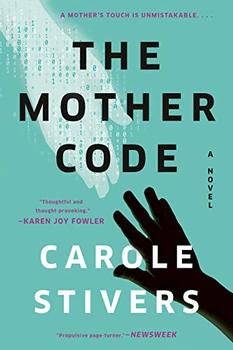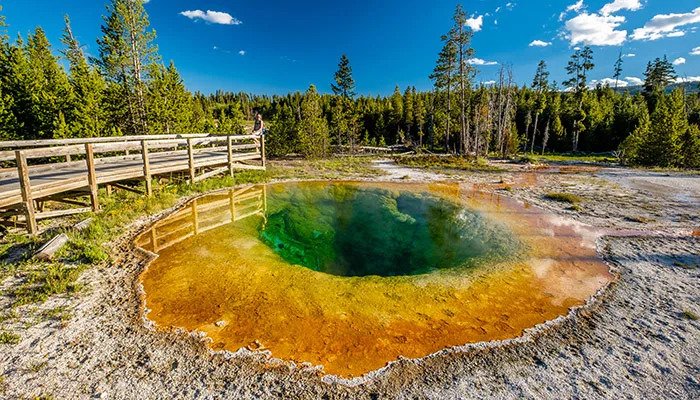Summary | Excerpt | Reading Guide | Reviews | Beyond the Book | Read-Alikes | Genres & Themes | Author Bio

Critics' Opinion:
Readers' Opinion:
First Published:
Aug 2020, 352 pages
Paperback:
Aug 2021, 352 pages
 Book Reviewed by:
Book Reviewed by:
Norah Piehl
Buy This Book
This article relates to The Mother Code
 Carole Stivers' novel The Mother Code imagines the rapid spread of a deadly genetically engineered disease called IC-NAN. The widespread proliferation of the disease is due in large part to its receptive archaebacteria, which serve as both host and incubator for the IC-NAN's DNA; as one character puts it, "these archaebacteria are capable of taking in the [nonlethal] linear form, making more copies of it, and manufacturing more [deadly] spherical NANs from that DNA." But what are archaebacteria?
Carole Stivers' novel The Mother Code imagines the rapid spread of a deadly genetically engineered disease called IC-NAN. The widespread proliferation of the disease is due in large part to its receptive archaebacteria, which serve as both host and incubator for the IC-NAN's DNA; as one character puts it, "these archaebacteria are capable of taking in the [nonlethal] linear form, making more copies of it, and manufacturing more [deadly] spherical NANs from that DNA." But what are archaebacteria?
Archaebacteria — or, as they are more properly called, archaea, are microbes that are similar to bacteria in size and simplicity but actually work quite differently on a molecular level. Scientists now believe that archaea form a third, intermediate group between bacteria and eukaryotic cells — that is, the kinds of cells that make up all plants, animals and fungi. Because they are not true bacteria, the name archaebacteria is technically outmoded, though it is still commonly used.
Both bacteria and archaea are prokaryotes — single-celled organisms without a nucleus or organelles. Archaea were first classified separately from bacteria in the 1970s, when scientists determined that they shared a common ancestor but evolved quite distinctly, with key differences in their cell walls and other structures.
The name "archaea" shares a root with "archaic" and means "ancient things." The first identified archaea were primitive structures known as methanogens (creating methane gas), a holdover from a time when Earth's atmosphere was far more extreme than it is today. Initially, archaea were thought to flourish solely in these extreme environments, from volcanic hot springs to salt lakes. Now, scientists recognize several groups of archaea, including the aforementioned methanogens, halophiles (salt-loving organisms that thrive in salt lakes and tide pools), and thermofiles (heat-loving organisms found near thermal vents and hot springs). You may recognize archaea as lending a distinct yellow color to the famous Morning Glory Hot Springs in Yellowstone National Park. Archaea have even been found to eat ammonia in seawater and to have a complicated, perhaps symbiotic relationship with acidic mine runoff.
In more recent years, scientists have recognized that they are present throughout the natural world, not just in extreme environments. They play important roles in the human microbiome in the gut, mouth and skin. Archaea are also very prevalent in ocean plankton environments, comprising up to 20 percent of the microbial cells in the ocean. The more scientists learn about archaea, the more significant and essential they appear to be.
Stivers, a biochemist by training, excels at explaining scientific terms like archaebacteria in The Mother Code. The way these small but pivotal organisms function in her plot illustrates just how much humans still have to learn about microorganisms, and about how human technology may interact with them — for better or for worse.
Yellowstone's Morning Glory Spring, courtesy of Yellowstone National Park
Filed under Medicine, Science and Tech
![]() This "beyond the book article" relates to The Mother Code. It originally ran in September 2020 and has been updated for the
August 2021 paperback edition.
Go to magazine.
This "beyond the book article" relates to The Mother Code. It originally ran in September 2020 and has been updated for the
August 2021 paperback edition.
Go to magazine.





The Funeral Cryer by Wenyan Lu
Debut novelist Wenyan Lu brings us this witty yet profound story about one woman's midlife reawakening in contemporary rural China.
Your guide toexceptional books
BookBrowse seeks out and recommends the best in contemporary fiction and nonfiction—books that not only engage and entertain but also deepen our understanding of ourselves and the world around us.